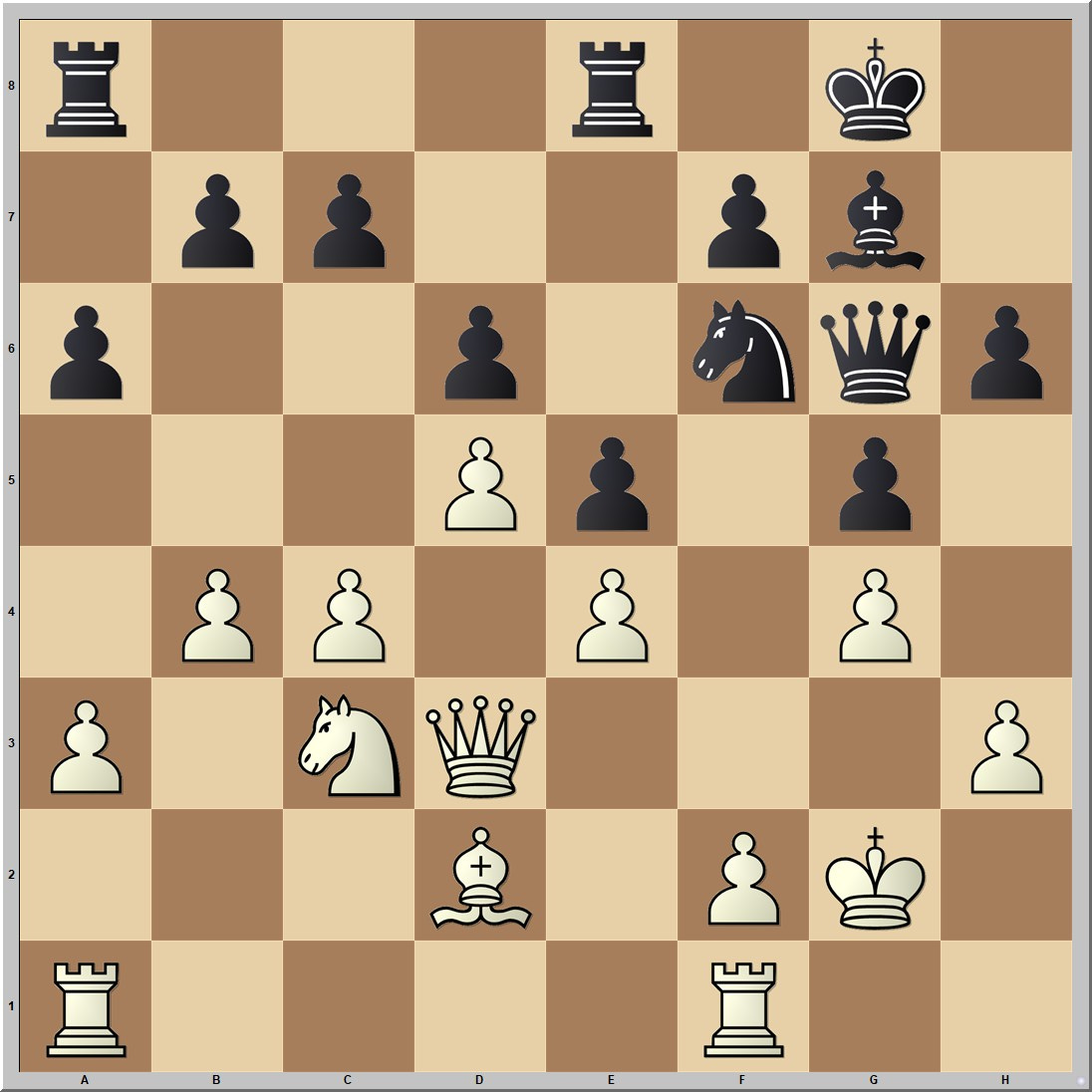Quick announcement: my new Chessable course on a Semi-Slav repertoire for Black is coming out on Monday (for real, this time!!!). I’ve had a few false alarms on this one, but everything is finally done, including the videos. So barring something very unexpected it will be available on Chessable on the 19th!
Here is a position one of my students encountered recently. How would you proceed with Black?
Well, hopefully you noticed that mate in one is threatened on g7! There are two ways to defend: Rf7 or Qd7. Which is better, and why?
In the game, Black chose to use the queen, but after 18… Qd7 19. Rxf4 Nxe5 20. Qg5 the position is highly unclear. Despite being up two pawns, Black has no simple way to resolve the danger on the kingside. Whenever your king is under a sustained attack, there’s a high risk of missing something and losing.
Far better would have been 18... Rf7! One reason for this is it allows Black’s queen to stay in a dominant position in the center, controlling many key squares and preventing White’s knight from reentering the game via c4. With better centralization and coordination, Black could quickly beat back White’s attack. For example 19. Rxf4 Nxe5 20. Qg3 Raf8 21. Raf1 Nd7 22. fxg7 Rxg7.
I think there’s a more general lesson to be learned here, but before saying what it is, let’s look at one more example. What would you do with White in this position?
If you’re familiar with the concept of weak squares, f5 should jump out at you as a juicy spot to plant a piece. However, immediately trying to route a knight there with 20. Ne2 would simply lose a pawn to Qxe4+. Therefore, White should defend e4 before proceeding with this plan.
(By the way, 20. c5 is a thematic pawn break, but in this case it’s better to assert more control over the position before changing the pawn structure.)
White has several ways to defend e4: f3, either rook to e1, or even the eccentric Kf3, which I’ve had several students suggest. Here’s where I’d like to propose a rule:
In general, it’s best to use the least valuable piece for defense.
Maybe this is something everyone knows, but I can’t remember ever seeing it stated outright in a chess book.
In this case, it means 20. f3 is the best way to defend the e4 pawn. In this case, you could arrive at the same conclusion with concrete reasoning:
A rook on the e-file will be blocked by the intended knight maneuver starting with Ne2.
There’s just no reason to risk your king safety by walking out into the center with Kf3.
However, I think defending with the weakest piece is a sound general principle that applies in many positions. The reason is that it allows you to use your forces as efficiently as possible.
When assigned to defensive duty, a piece is tied down and can’t do anything else without losing the thing it’s defending. Therefore, it’s best to use the least valuable piece available for this task, ideally a pawn. This is part of why pawn chains are so good: they form a sequence of maximally efficient defense.
Another way of putting it would be that, the more valuable the piece, the higher the opportunity cost of using it purely for defense. The better the piece, the more it could do elsewhere, if it weren’t tied down to defense.
This concept applies all the way up a food chain. Using a pawn for defense is more efficient than a minor piece, which is still more efficient than a rook. As the most powerful piece of all, the queen is the most costly to use purely for defense.
While the queen is the most costly, the most common example of this, in my experience, involves the rook. Even beginning players know the queen is the best piece and usually don’t assign her to babysit a pawn. But it’s easier to forget just how valuable the rook is.
Players can and do use rooks to defend pawns all the time, but using a piece that’s worth 5 points to save a piece that’s worth 1 isn’t a winning strategy. It’s usually better to look for a way to use the rook actively, often sacrificing a pawn if necessary.
Have you ever heard this rule before? And can you think of any exceptions?






I think it’s similar to something Dan Heisman wrote about “AWL - attack with less”. Meaning attack with the least valuable piece. But I’ve never read the opposite, “defend with less”
Great to see your Semi-Slav course is out! Congrats! (I was hoping to see your other courses on sale too =()